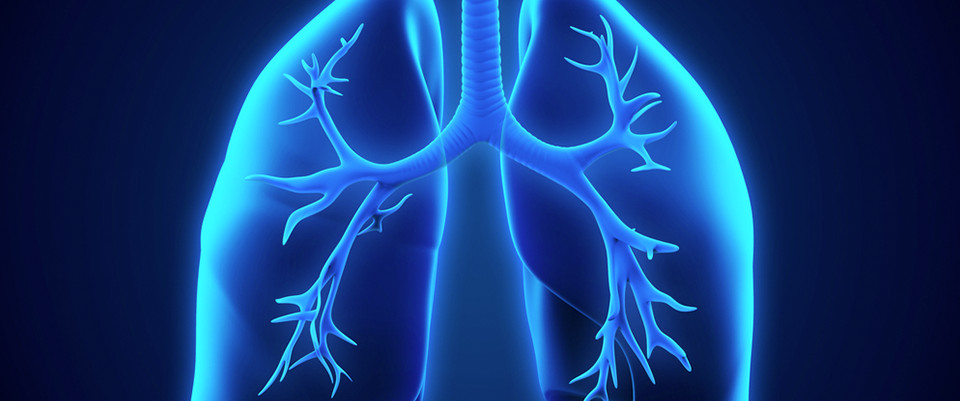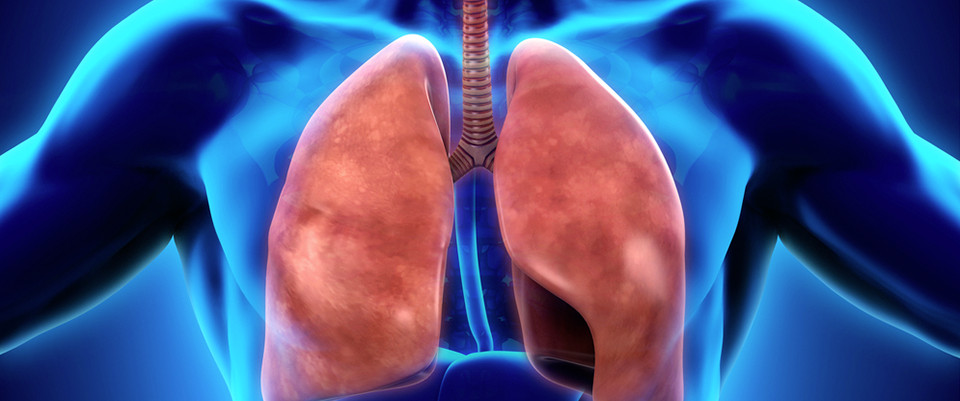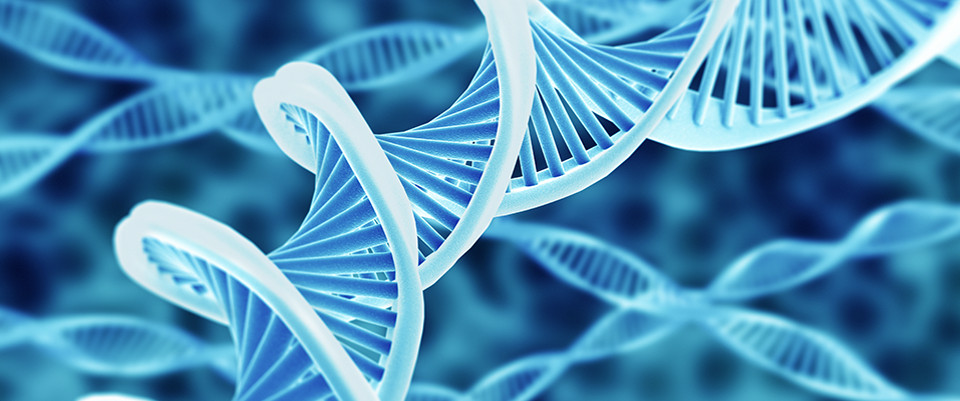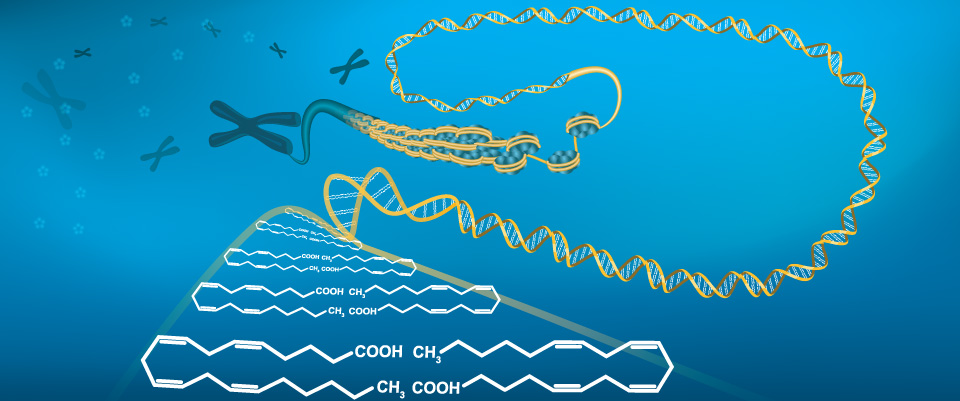PubMed
Analysis of the human adult urinary metabolome variations with age, body mass index and gender by implementing a comprehensive workflow for univariate and OPLS statistical analyses.
Related Articles
Analysis of the human adult urinary metabolome variations with age, body mass index and gender by implementing a comprehensive workflow for univariate and OPLS statistical analyses.
J Proteome Res. 2015 Jun 19;
Authors: Thévenot EA, Roux A, Xu Y, Ezan E, Junot C
Abstract
Urine metabolomics is widely used for biomarker research in the fields of medicine and toxicology. As a consequence, characterization of the variations of the urine metabolome in basal conditions becomes critical in order to avoid confounding effects in cohort studies. Such physiological information is however very scarce in the literature and in metabolomics databases so far. Here we studied the influence of age, body mass index (BMI) and gender on metabolite concentrations in a large cohort of 183 adults by using liquid chromatography coupled to high-resolution mass spectrometry (LC-HRMS). We implemented a comprehensive statistical workflow for univariate hypothesis testing and modeling by orthogonal partial least-squares (OPLS), which we made available to the metabolomics community within the online Workflow4Metabolomics.org resource. We found 108 urine metabolites displaying concentration variations with either age, BMI, or gender, by integrating the results from univariate p-values and multivariate variable importance in projection (VIP). Several metabolite clusters were further evidenced by correlation analysis, and allowed stratification of the cohort. In conclusion, our study highlights the impact of gender and age on the urinary metabolome, and thus indicates that these factors should be taken into account for the design of metabolomics studies.
PMID: 26088811 [PubMed - as supplied by publisher]
Proteomic and metabonomic biomarkers for hepatocellular carcinoma: a comprehensive review.
Related Articles
Proteomic and metabonomic biomarkers for hepatocellular carcinoma: a comprehensive review.
Br J Cancer. 2015 Mar 31;112(7):1141-56
Authors: Kimhofer T, Fye H, Taylor-Robinson S, Thursz M, Holmes E
Abstract
Hepatocellular carcinoma (HCC) ranks third in overall global cancer-related mortality. Symptomatic presentation often means advanced disease where potentially curative treatment options become very limited. Numerous international guidelines propose the routine monitoring of those with the highest risk factors for the condition in order to diagnose potential tumourigenesis early. To aid this, the fields of metabonomic- and proteomic-based biomarker discovery have applied advanced tools to identify early changes in protein and metabolite expression in HCC patients vs controls. With robust validation, it is anticipated that from these candidates will rise a high-performance non-invasive test able to diagnose early HCC and related conditions. This review gathers the numerous markers proposed by studies using mass spectrometry and proton nuclear magnetic resonance spectroscopy and evaluates areas of consistency as well as discordance.
PMID: 25826224 [PubMed - indexed for MEDLINE]
Development of personalized functional foods needs metabolic profiling.
Related Articles
Development of personalized functional foods needs metabolic profiling.
Curr Opin Clin Nutr Metab Care. 2014 Nov;17(6):567-73
Authors: Claus SP
Abstract
PURPOSE OF REVIEW: There is growing interest in applying metabolic profiling technologies to food science as this approach is now embedded into the foodomics toolbox. This review aims at exploring how metabolic profiling can be applied to the development of functional foods.
RECENT FINDINGS: One of the biggest challenges of modern nutrition is to propose a healthy diet to populations worldwide that must suit high inter-individual variability driven by complex gene-nutrient-environment interactions. Although a number of functional foods are now proposed in support of a healthy diet, a one-size-fits-all approach to nutrition is inappropriate and new personalized functional foods are necessary. Metabolic profiling technologies can assist at various levels of the development of functional foods, from screening for food composition to identification of new biomarkers of food intake to support diet intervention and epidemiological studies.
SUMMARY: Modern 'omics' technologies, including metabolic profiling, will support the development of new personalized functional foods of high relevance to 21st century medical challenges, such as controlling the worldwide spread of metabolic disorders and ensuring healthy ageing.
PMID: 25137506 [PubMed - indexed for MEDLINE]
Sorting signal targeting mRNA into hepatic extracellular vesicles.
Related Articles
Sorting signal targeting mRNA into hepatic extracellular vesicles.
RNA Biol. 2014;11(7):836-44
Authors: Szostak N, Royo F, Rybarczyk A, Szachniuk M, Blazewicz J, del Sol A, Falcon-Perez JM
Abstract
Intercellular communication mediated by extracellular vesicles has proved to play an important role in normal and pathological scenarios. However not too much information about the sorting mechanisms involved in loading the vesicles is available. Recently, our group has characterized the mRNA content of vesicles released by hepatic cellular systems, showing that a set of transcripts was particularly enriched in the vesicles in comparison with their intracellular abundance. In the current work, based on in silico bioinformatics tools, we have mapped a novel sequence of 12 nucleotides C[TA]G[GC][AGT]G[CT]C[AT]GG[GA], which is significantly enriched in the set of mRNAs that accumulate in extracellular vesicles. By including a 3'-UTR containing this sequence in a luciferase mRNA reporter, we have shown that in a hepatic cellular system this reporter mRNA was incorporated into extracellular vesicles. This study identifies a sorting signal in mRNAs that is involved in their enrichment in EVs, within a hepatic non-tumoral cellular model.
PMID: 24921245 [PubMed - indexed for MEDLINE]
A protective lipidomic biosignature associated with a balanced omega-6/omega-3 ratio in fat-1 transgenic mice.
Related Articles
A protective lipidomic biosignature associated with a balanced omega-6/omega-3 ratio in fat-1 transgenic mice.
PLoS One. 2014;9(4):e96221
Authors: Astarita G, McKenzie JH, Wang B, Strassburg K, Doneanu A, Johnson J, Baker A, Hankemeier T, Murphy J, Vreeken RJ, Langridge J, Kang JX
Abstract
A balanced omega-6/omega-3 polyunsaturated fatty acid (PUFA) ratio has been linked to health benefits and the prevention of many chronic diseases. Current dietary intervention studies with different sources of omega-3 fatty acids (omega-3) lack appropriate control diets and carry many other confounding factors derived from genetic and environmental variability. In our study, we used the fat-1 transgenic mouse model as a proxy for long-term omega-3 supplementation to determine, in a well-controlled manner, the molecular phenotype associated with a balanced omega-6/omega-3 ratio. The fat-1 mouse can convert omega-6 to omega-3 PUFAs, which protect against a wide variety of diseases including chronic inflammatory diseases and cancer. Both wild-type (WT) and fat-1 mice were subjected to an identical diet containing 10% corn oil, which has a high omega-6 content similar to that of the Western diet, for a six-month duration. We used a multi-platform lipidomic approach to compare the plasma lipidome between fat-1 and WT mice. In fat-1 mice, an unbiased profiling showed a significant increase in the levels of unesterified eicosapentaenoic acid (EPA), EPA-containing cholesteryl ester, and omega-3 lysophosphospholipids. The increase in omega-3 lipids is accompanied by a significant reduction in omega-6 unesterified docosapentaenoic acid (omega-6 DPA) and DPA-containing cholesteryl ester as well as omega-6 phospholipids and triacylglycerides. Targeted lipidomics profiling highlighted a remarkable increase in EPA-derived diols and epoxides formed via the cytochrome P450 (CYP450) pathway in the plasma of fat-1 mice compared with WT mice. Integration of the results of untargeted and targeted analyses has identified a lipidomic biosignature that may underlie the healthful phenotype associated with a balanced omega-6/omega-3 ratio, and can potentially be used as a circulating biomarker for monitoring the health status and the efficacy of omega-3 intervention in humans.
PMID: 24760204 [PubMed - indexed for MEDLINE]
Prospective evaluation of potential toxicity of repeated doses of Thymus vulgaris L. extracts in rats by means of clinical chemistry, histopathology and NMR-based metabonomic approach.
Related Articles
Prospective evaluation of potential toxicity of repeated doses of Thymus vulgaris L. extracts in rats by means of clinical chemistry, histopathology and NMR-based metabonomic approach.
Drug Test Anal. 2014 Oct;6(10):1069-75
Authors: Benourad F, Kahvecioglu Z, Youcef-Benkada M, Colet JM
Abstract
In the field of natural extracts, research generally focuses on the study of their biological activities for food, cosmetic, or pharmacological purposes. The evaluation of their adverse effects is often overlooked. In this study, the extracts of Thymus vulgaris L. were obtained by two different extraction methods. Intraperitoneal injections of both extracts were given daily for four days to male Wistar Han rats, at two different doses for each extract. The evaluation of the potential toxic effects included histopathological examination of liver, kidney, and lung tissues, as well as serum biochemistry of liver and kidney parameters, and (1)H-NMR-based metabonomic profiles of urine. The results showed that no histopathological changes were observed in the liver and kidney in rats treated with both extracts of thyme. Serum biochemical investigations revealed significant increases in blood urea nitrogen, creatinine, and uric acid in animals treated with polyphenolic extract at both doses. In these latter groups, metabonomic analysis revealed alterations in a number of urine metabolites involved in the energy metabolism in liver mitochondria. Indeed, the results showed alterations of glycolysis, Krebs cycle, and β-oxidative pathways as evidenced by increases in lactate and ketone bodies, and decreases in citrate, α-ketoglutarate, creatinine, hippurate, dimethylglycine, and dimethyalanine. In conclusion, this work showed that i.p. injection of repeated doses of thyme extracts causes some disturbances of intermediary metabolism in rats. The metabonomic study revealed interesting data which could be further used to determine the cellular pathways affected by such treatments.
PMID: 24574060 [PubMed - indexed for MEDLINE]
metabolomics; +21 new citations
21 new pubmed citations were retrieved for your search.
Click on the search hyperlink below to display the complete search results:
metabolomics
These pubmed results were generated on 2015/06/19PubMed comprises more than 24 million citations for biomedical literature from MEDLINE, life science journals, and online books.
Citations may include links to full-text content from PubMed Central and publisher web sites.
Untargeted Metabolomics Reveals Predominant Alterations in Lipid Metabolism Following Light Exposure in Broccoli Sprouts.
Untargeted Metabolomics Reveals Predominant Alterations in Lipid Metabolism Following Light Exposure in Broccoli Sprouts.
Int J Mol Sci. 2015;16(6):13678-13691
Authors: Maldini M, Natella F, Baima S, Morelli G, Scaccini C, Langridge J, Astarita G
Abstract
The consumption of vegetables belonging to the family Brassicaceae (e.g., broccoli and cauliflower) is linked to a reduced incidence of cancer and cardiovascular diseases. The molecular composition of such plants is strongly affected by growing conditions. Here we developed an unbiased metabolomics approach to investigate the effect of light and dark exposure on the metabolome of broccoli sprouts and we applied such an approach to provide a bird's-eye view of the overall metabolic response after light exposure. Broccoli seeds were germinated and grown hydroponically for five days in total darkness or with a light/dark photoperiod (16 h light/8 h dark cycle). We used an ultra-performance liquid-chromatography system coupled to an ion-mobility, time-of-flight mass spectrometer to profile the large array of metabolites present in the sprouts. Differences at the metabolite level between groups were analyzed using multivariate statistical analyses, including principal component analysis and correlation analysis. Altered metabolites were identified by searching publicly available and in-house databases. Metabolite pathway analyses were used to support the identification of subtle but significant changes among groups of related metabolites that may have gone unnoticed with conventional approaches. Besides the chlorophyll pathway, light exposure activated the biosynthesis and metabolism of sterol lipids, prenol lipids, and polyunsaturated lipids, which are essential for the photosynthetic machinery. Our results also revealed that light exposure increased the levels of polyketides, including flavonoids, and oxylipins, which play essential roles in the plant's developmental processes and defense mechanism against herbivores. This study highlights the significant contribution of light exposure to the ultimate metabolic phenotype, which might affect the cellular physiology and nutritional value of broccoli sprouts. Furthermore, this study highlights the potential of an unbiased omics approach for the comprehensive study of the metabolism.
PMID: 26084047 [PubMed - as supplied by publisher]
Necrosis: Linking the Inflammasome to Inflammation.
Necrosis: Linking the Inflammasome to Inflammation.
Cell Rep. 2015 Jun 16;11(10):1501-1502
Authors: Galluzzi L, Bravo-San Pedro JM, Kroemer G
Abstract
In this issue of Cell Reports, Cullen et al. demonstrate that the release of mature interleukin-1β relies on necrotic plasma membrane permeabilization. Thus, caspases may have evolved to modulate the inflammatory potential of cell death, not to execute it.
PMID: 26082972 [PubMed - as supplied by publisher]
Corrigendum: "Combinatorial Strategies for the Induction of Immunogenic Cell Death".
Corrigendum: "Combinatorial Strategies for the Induction of Immunogenic Cell Death".
Front Immunol. 2015;6:275
Authors: Bezu L, Gomes-da-Silva LC, Dewitte H, Breckpot K, Fucikova J, Spisek R, Galluzzi L, Kepp O, Kroemer G
Abstract
[This corrects the article on p. 187 in vol. 6, PMID: 25964783.].
PMID: 26082782 [PubMed - as supplied by publisher]
Differential CO2 effect on primary carbon metabolism of flag leaves in durum wheat (Triticum durum Desf.).
Differential CO2 effect on primary carbon metabolism of flag leaves in durum wheat (Triticum durum Desf.).
Plant Cell Environ. 2015 Jun 17;
Authors: Aranjuelo I, Erice G, Sanz-Sáez A, Abadie C, Gilard F, Gil E, Avice JC, Staudinger C, Wienkoop S, Araus JL, Bourguignon J, Irigoyen JJ, Tcherkez G
Abstract
C sink/source balance and N assimilation have been identified as target processes conditioning crop responsiveness to elevated CO2 . However, little is known about phenology-driven modifications of C and N primary metabolism at elevated CO2 in cereals such as wheat. Here, we examined the differential effect of elevated CO2 at two development stages (onset of flowering, onset of grain filling) in durum wheat (Triticum durum, var. Sula) using physiological measurements (photosynthesis, isotopes), metabolomics, proteomics and (15) N-labelling. Our results show that growth at elevated CO2 was accompanied by photosynthetic acclimation through a lower internal (mesophyll) conductance but no significant effect on Rubisco content, maximal carboxylation or electron transfer. Growth at elevated CO2 altered photosynthate export and tended to accelerate leaf N remobilization, which was visible for several proteins and amino acids, as well as lysine degradation metabolism. However, grain biomass produced at elevated CO2 was larger and less N-rich, suggesting that nitrogen use efficiency rather than photosynthesis is an important target for improvement, even in good CO2 -responsive cultivars.
PMID: 26081746 [PubMed - as supplied by publisher]
Distribution and biomarker of carbon-14 labeled fullerene C60 ([(14) C(U)]C60 ) in pregnant and lactating rats and their offspring after maternal intravenous exposure.
Distribution and biomarker of carbon-14 labeled fullerene C60 ([(14) C(U)]C60 ) in pregnant and lactating rats and their offspring after maternal intravenous exposure.
J Appl Toxicol. 2015 Jun 17;
Authors: Snyder RW, Fennell TR, Wingard CJ, Mortensen NP, Holland NA, Shannahan JH, Pathmasiri W, Lewin AH, Sumner SC
Abstract
A comprehensive distribution study was conducted in pregnant and lactating rats exposed to a suspension of uniformly carbon-14 labeled C60 ([(14) C(U)]C60 ). Rats were administered [(14) C(U)]C60 (~0.2 mg [(14) C(U)]C60 kg(-1) body weight) or 5% polyvinylpyrrolidone (PVP)-saline vehicle via a single tail vein injection. Pregnant rats were injected on gestation day (GD) 11 (terminated with fetuses after either 24 h or 8 days), GD15 (terminated after 24 h or 4 days), or GD18 (terminated after 24 h). Lactating rats were injected on postnatal day 8 and terminated after 24 h, 3 or 11 days. The distribution of radioactivity in pregnant dams was influenced by both the state of pregnancy and time of termination after exposure. The percentage of recovered radioactivity in pregnant and lactating rats was highest in the liver and lungs. Radioactivity was quantitated in over 20 tissues. Radioactivity was found in the placenta and in fetuses of pregnant dams, and in the milk of lactating rats and in pups. Elimination of radioactivity was < 2% in urine and feces at each time point. Radioactivity remained in blood circulation up to 11 days after [(14) C(U)]C60 exposure. Biomarkers of inflammation, cardiovascular injury and oxidative stress were measured to study the biological impacts of [(14) C(U)]C60 exposure. Oxidative stress was elevated in female pups of exposed dams. Metabolomics analysis of urine showed that [(14) C(U)]C60 exposure to pregnant rats impacted the pathways of vitamin B, regulation of lipid and sugar metabolism and aminoacyl-tRNA biosynthesis. This study demonstrated that [(14) C(U)]C60 crosses the placenta at all stages of pregnancy examined, and is transferred to pups via milk. Copyright © 2015 John Wiley & Sons, Ltd.
PMID: 26081520 [PubMed - as supplied by publisher]
NMR based serum metabolomics discriminates Takayasu Arteritis from Healthy Individuals: A proof of principle study.
NMR based serum metabolomics discriminates Takayasu Arteritis from Healthy Individuals: A proof of principle study.
J Proteome Res. 2015 Jun 17;
Authors: Guleria A, Misra DP, Rawat A, Dubey D, Khetrapal CL, Bacon P, Misra R, Kumar D
Abstract
Takayasu Arteritis (TA) is a debilitating, systemic disease which involves the aorta and large arteries in a chronic inflammatory process leading to vessel stenosis. Initially, the disease remains clinically silent (or remains undetected) until the patients present with vascular occlusion. Therefore, new methods for appropriate and timely diagnosis of TA cases are needed to start proper therapy on time and also to monitor the patient's response to the given treatment. In this context, NMR-based serum metabolomic profiling has been explored in this proof of principle study for the first time to determine characteristic metabolites that could potentially be helpful for diagnosis and prognosis of TA. Serum metabolic profiling of TA patients (n = 29) and healthy controls (n = 30) was performed using 1D 1H NMR spectroscopy and possible biomarker metabolites were identified. Using projection to least squares discriminant analysis, we could distinguish TA patients from healthy controls. Compared to healthy controls, the TA patients had (a) increased serum levels of choline metabolites, LDL cholesterol, N-acetyl glycoproteins (NAGs), and glucose and (b) decreased serum levels of lactate, lipids, HDL cholesterol, glucogenic amino acids. The results of this study are preliminary and need to be confirmed in a prospective study.
PMID: 26081138 [PubMed - as supplied by publisher]
Rapid and reliable identification of phospholipids for untargeted metabolomics with LC-ESI-QTOF-MS/MS.
Rapid and reliable identification of phospholipids for untargeted metabolomics with LC-ESI-QTOF-MS/MS.
J Proteome Res. 2015 Jun 17;
Authors: Godzien J, Ciborowski M, Martínez-Alcázar MP, Samczuk P, Kretowski A, Barbas C
Abstract
Lipids are important components of biological systems, and their role is currently investigated by application of untargeted, holistic approaches such us metabolomics/lipidomics. Acquired data is analysed to find significant signals responsible for the differentiation between investigated conditions. Subsequently identification has to be performed to bring biological meaning to the obtained results. Lipid identification seems to be relatively easy due to the known characteristic fragments, however large number of structural isomers and the formation of different adducts, makes it challenging and at risk of misidentification. The inspection of data, acquired for plasma samples by a standard metabolic fingerprinting method, revealed multi-signals formation for phosphatidylcholines, phosphatidylethanolamines and sphingomyelines by formation of ionssuch as: [M+H]+, [M+Na]+, [M+K]+ in positive ionisation mode, [M-H]-, [M+HCOO]- and [M+Cl]- in negative mode. Moreover sodium formate cluster formation was found for [M+H.HCOONa]+ and [H-H.HCOONa]-. The MS/MS spectrum obtained for each of the multi-ions revealed significant differences in the fragmentation, which were confirmed by analysis of the samples in two independent research centres. After inspection of an acquired spectra, a list of characteristic and diagnostic fragments was proposed; which allowed for easy, quick and robust lipid identification providing information about the head group, formed adduct and fatty acyl composition. This ensures successful identification which is of great importance for contextualisation of data and results validation.
PMID: 26080858 [PubMed - as supplied by publisher]
[Hypothesis and application of bimolecular marking methods in Chinese materia medica].
[Hypothesis and application of bimolecular marking methods in Chinese materia medica].
Zhongguo Zhong Yao Za Zhi. 2015 Jan;40(2):165-8
Authors: Huang LQ, Qian D, Deng C
Abstract
Based on the current shortage of genuine/false authentication and quality evaluation in the molecular identification, and the weak functional gene research in the establishment of two-dimensional molecular markering methods for Chinese materia medica, the authors proposed a new method, the bimolecular marking methods (BIMM) for Chinese materia medica, combining DNA marker and metabolomics marker, that could simultaneously research the species and quality differences at the molecular level at the present stage. The authors introduced the concept, principle, methods, and technical process of BIMM, and summarized the technical advantages in this paper. Meanwhile, the application of BIMM in the identification of multiple sources of Chinese materia medica, years-identification, different locations, elite germplasm research, discovery of new drugs resources, protection of new varieties was also discussed. As a supplement of two-dimensional molecular markering method for Chinese materia medica, BIMM would not only expand connotation of identification of Chinese materia medica but also provide another effective way for quality evaluating.
PMID: 26080538 [PubMed - in process]
Lipid profiling reveals different therapeutic effects of metformin and glipizide in patients with type 2 diabetes and coronary artery disease.
Related Articles
Lipid profiling reveals different therapeutic effects of metformin and glipizide in patients with type 2 diabetes and coronary artery disease.
Diabetes Care. 2014 Oct;37(10):2804-12
Authors: Zhang Y, Hu C, Hong J, Zeng J, Lai S, Lv A, Su Q, Dong Y, Zhou Z, Tang W, Zhao J, Cui L, Zou D, Wang D, Li H, Liu C, Wu G, Shen J, Zhu D, Wang W, Shen W, Ning G, Xu G
Abstract
OBJECTIVE: We recently demonstrated a beneficial effect of metformin compared with glipizide in type 2 diabetic patients regarding cardiovascular outcomes for 3-year treatment in the SPREAD-DIMCAD study. However, the potential mechanism for the clinical effects remains unclear. Here, we performed a comprehensive lipidomics study to evaluate the different lipid metabolites in serum samples obtained from participants in this study.
RESEARCH DESIGN AND METHODS: Liquid chromatography-quadrupole time of flight-mass spectrometry was used to evaluate the different lipid metabolites in serum samples obtained from the participants (21 patients in glipizide group and 23 patients in metformin group) before and after each year of treatment (at 0 [baseline], 1, 2, and 3 years of study drug administration).
RESULTS: A total of 118 serum lipid molecular species was identified and quantified. During treatment, metformin induced a substantially greater change in serum lipid species compared with glipizide, especially at the 2- and 3-year time points (with 2, 11, and 12 lipid species being significantly different between the groups after each year of treatment [1, 2, or 3 years], P < 0.05). Among the significantly changed lipid species, three lipid metabolites were linked to long-term composite cardiovascular events (adjusted P < 0.05). After treatment, triacylglycerols (TAGs) of a relatively higher carbon number showed a clearly increased trend in metformin group compared with the glipizide group, whereas the changes in TAGs with different double bonds were minimal.
CONCLUSIONS: Our findings revealed the differential therapeutic effects of metformin and glipizide on comprehensive lipidomics, which were comparable with their different long-term effects on cardiovascular outcomes.
PMID: 25011952 [PubMed - indexed for MEDLINE]
Molecular mechanisms of cell death: central implication of ATP synthase in mitochondrial permeability transition.
Related Articles
Molecular mechanisms of cell death: central implication of ATP synthase in mitochondrial permeability transition.
Oncogene. 2015 Mar 19;34(12):1475-86
Authors: Bonora M, Wieckowski MR, Chinopoulos C, Kepp O, Kroemer G, Galluzzi L, Pinton P
Abstract
The term mitochondrial permeability transition (MPT) is commonly used to indicate an abrupt increase in the permeability of the inner mitochondrial membrane to low molecular weight solutes. Widespread MPT has catastrophic consequences for the cell, de facto marking the boundary between cellular life and death. MPT results indeed in the structural and functional collapse of mitochondria, an event that commits cells to suicide via regulated necrosis or apoptosis. MPT has a central role in the etiology of both acute and chronic diseases characterized by the loss of post-mitotic cells. Moreover, cancer cells are often relatively insensitive to the induction of MPT, underlying their increased resistance to potentially lethal cues. Thus, intense efforts have been dedicated not only at the understanding of MPT in mechanistic terms, but also at the development of pharmacological MPT modulators. In this setting, multiple mitochondrial and extramitochondrial proteins have been suspected to critically regulate the MPT. So far, however, only peptidylprolyl isomerase F (best known as cyclophilin D) appears to constitute a key component of the so-called permeability transition pore complex (PTPC), the supramolecular entity that is believed to mediate MPT. Here, after reviewing the structural and functional features of the PTPC, we summarize recent findings suggesting that another of its core components is represented by the c subunit of mitochondrial ATP synthase.
PMID: 24727893 [PubMed - indexed for MEDLINE]
Statistical-based approach in potential diagnostic application of urinary nucleosides in urogenital tract cancer.
Statistical-based approach in potential diagnostic application of urinary nucleosides in urogenital tract cancer.
Biomark Med. 2015 Jun;9(6):577-595
Authors: Daghir-Wojtkowiak E, Struck-Lewicka W, Waszczuk-Jankowska M, Markuszewski M, Kaliszan R, Markuszewski MJ
Abstract
AIM: We aimed at evaluation the potential diagnostic role of urinary nucleosides in urogenital tract cancer.
MATERIALS & METHODS: Concentrations of 12 nucleosides determined by LC-MS/MS were subjected to correlation, association and interaction analyses.
RESULTS: We identified six pairs of nucleosides differently correlated in the group of patients and controls (p < 0.05). N-2-methylguanosine (odds ratio: 4.82; 95% CI: 1.78-12.93; p = 0.002) and N,N-dimethylguanosine (odds ratio: 5.45; 95% CI: 1.78-16.44; p = 0.003), were significantly associated with the disease risk (p-corrected = 0.004). Interaction between N-2-methylguanosine and adenosine (p-interaction = 0.019) suggested their multiplicative effect on the outcome.
CONCLUSION: Urinary nucleosides, namely N,N-dimethylguanosine and N-2-methylguanosine may have the potential to serve as prognostic biomarkers. Gender-specific differences in urogenital tract cancer are likely to occur.
PMID: 26079962 [PubMed - as supplied by publisher]
Molecular anatomy of ascending aorta in atherosclerosis by MS Imaging: Specific lipid and protein patterns reflect pathology.
Molecular anatomy of ascending aorta in atherosclerosis by MS Imaging: Specific lipid and protein patterns reflect pathology.
J Proteomics. 2015 Jun 12;
Authors: Martin-Lorenzo M, Balluff B, Maroto AS, Carreira RJ, van Zeijl RJ, Gonzalez-Calero L, de la Cuesta F, Barderas MG, Lopez-Almodovar LF, Padial LR, McDonnell LA, Vivanco F, Alvarez-Llamas G
Abstract
The molecular anatomy of healthy and atherosclerotic tissue is pursued here to identify ongoing molecular changes in atherosclerosis development. Subclinical atherosclerosis cannot be predicted and novel therapeutic targets are needed. Mass Spectrometry Imaging (MSI) is a novel unexplored ex vivo imaging approach in CVD able to provide in-tissue molecular maps. A rabbit model of early atherosclerosis was developed and high-spatial-resolution MALDI-MSI was applied to comparatively analyze histologically-based arterial regions of interest from control and early atherosclerotic aortas. Specific protocols were applied to identify lipids and proteins significantly altered in response to atherosclerosis. Observed protein alterations were confirmed by immunohistochemistry in rabbit tissue, and additionally in human aortas. Molecular features specifically defining different arterial regions were identified. Localized in the intima, increased expression of SFA and lysolipids and intimal spatial organization showing accumulation of PI, PG and SM point to endothelial dysfunction and triggered inflammatory response. TG, PA, SM and PE-Cer were identified specifically located in calcified regions. Thymosin β4 (TMSB4X) protein was upregulated in intima versus media layer and also in response to atherosclerosis. This overexpression and localization was confirmed in human aortas. In conclusion, molecular histology by MS Imaging identifies spatial organization of arterial tissue in response to atherosclerosis.
PMID: 26079611 [PubMed - as supplied by publisher]
DNA barcoding: an efficient tool to overcome authentication challenges in the herbal market.
DNA barcoding: an efficient tool to overcome authentication challenges in the herbal market.
Plant Biotechnol J. 2015 Jun 16;
Authors: Mishra P, Kumar A, Nagireddy A, Mani DN, Shukla AK, Tiwari R, Sundaresan V
Abstract
The past couple of decades have witnessed global resurgence of herbal-based health care. As a result, the trade of raw drugs has surged globally. Accurate and fast scientific identification of the plant(s) is the key to success for the herbal drug industry. The conventional approach is to engage an expert taxonomist, who uses a mix of traditional and modern techniques for precise plant identification. However, for bulk identification at industrial scale, the process is protracted and time-consuming. DNA barcoding, on the other hand, offers an alternative and feasible taxonomic tool box for rapid and robust species identification. For the success of DNA barcode, the barcode loci must have sufficient information to differentiate unambiguously between closely related plant species and discover new cryptic species. For herbal plant identification, matK, rbcL, trnH-psbA, ITS, trnL-F, 5S-rRNA and 18S-rRNA have been used as successful DNA barcodes. Emerging advances in DNA barcoding coupled with next-generation sequencing and high-resolution melting curve analysis have paved the way for successful species-level resolution recovered from finished herbal products. Further, development of multilocus strategy and its application has provided new vistas to the DNA barcode-based plant identification for herbal drug industry. For successful and acceptable identification of herbal ingredients and a holistic quality control of the drug, DNA barcoding needs to work harmoniously with other components of the systems biology approach. We suggest that for effectively resolving authentication challenges associated with the herbal market, DNA barcoding must be used in conjunction with metabolomics along with need-based transcriptomics and proteomics.
PMID: 26079154 [PubMed - as supplied by publisher]











